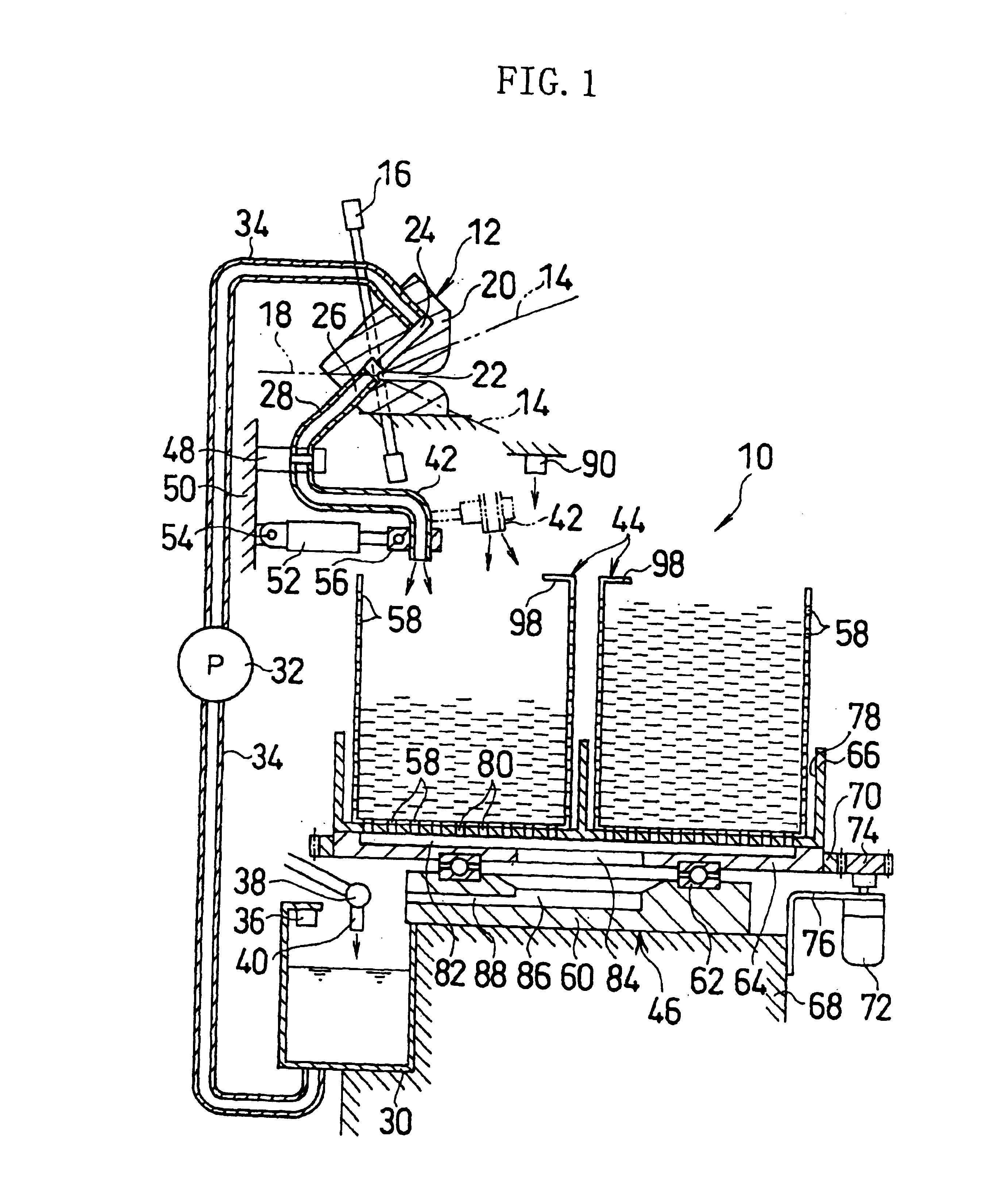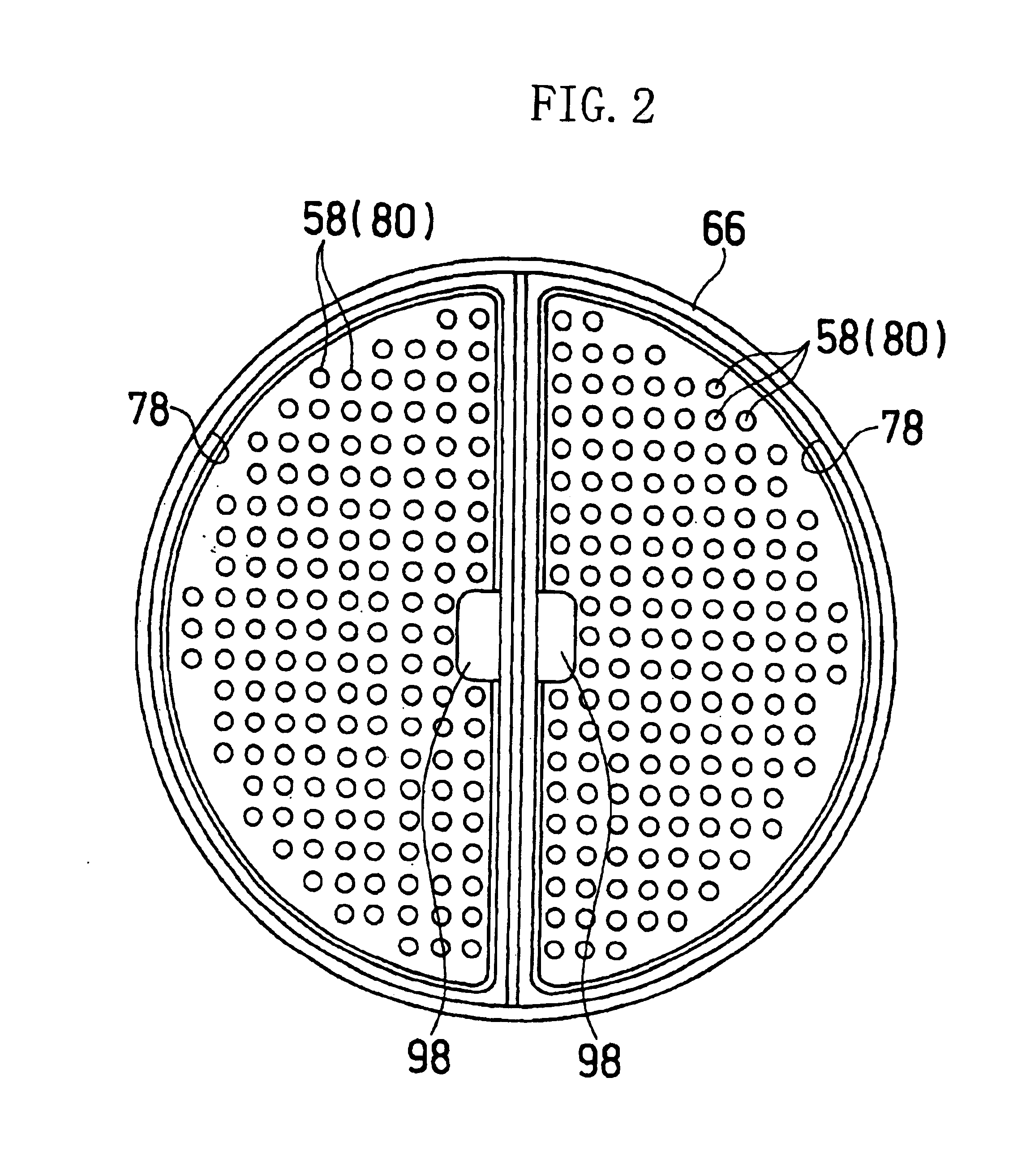Weft end collector
- Summary
- Abstract
- Description
- Claims
- Application Information
AI Technical Summary
Benefits of technology
Problems solved by technology
Method used
Image
Examples
Embodiment Construction
[0023]Referring to FIGS. 1-3, the weft end recovery apparatus 10 is applied to a water jet loom together with a weft end processing device 12.
[0024]The water jet loom inserts the weft (not shown) from a weft insert nozzle (not shown) into a shedding of the warp 14 by pressure water, restrains and holds the front end of the inserted weft by the weft end processing device 12, and beats the weft in that state against a cloth fell by a reed to form a fabric 18. The beaten weft front ends are cut away from the fabric 18, thereby forming weft ends.
[0025]The weft end processing device 12 includes a block-shaped weft catching bracket 20 for catching the front ends of the weft. The catching bracket 20 makes the weft front ends pass by receiving the front ends of the weft to be beaten into a slit 22 and discharging the pressure water from a discharge channel 24 via the back of the slit 22 into an exhaust channel 26. Thus, the weft front ends are brought into contact with the pressure water at...
PUM
 Login to View More
Login to View More Abstract
Description
Claims
Application Information
 Login to View More
Login to View More - R&D
- Intellectual Property
- Life Sciences
- Materials
- Tech Scout
- Unparalleled Data Quality
- Higher Quality Content
- 60% Fewer Hallucinations
Browse by: Latest US Patents, China's latest patents, Technical Efficacy Thesaurus, Application Domain, Technology Topic, Popular Technical Reports.
© 2025 PatSnap. All rights reserved.Legal|Privacy policy|Modern Slavery Act Transparency Statement|Sitemap|About US| Contact US: help@patsnap.com



